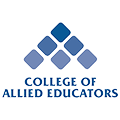Figuring out if a child has a learning disorder isn’t always easy or straightforward. Children develop at different rates and paces. Some pick up reading and writing very early, while others may learn to talk earlier than others.
Learning disorders, as described by Golisano Children’s Hospital at Strong, University of Rochester School of Medicine and Dentistry:
Learning disorders involve an inability to acquire, retain, or broadly use specific skills or information, resulting from deficiencies in attention, memory, or reasoning and affecting academic performance. Affected children may be slow to learn names of colours or letters, to count, or to learn to read or write.
Children with learning disorders will have on-going difficulties in processing and retaining information. This will negatively affect reading, writing, spelling, and maths abilities of the child. Some of the most common learning disorders include:
Dyslexia
Children struggling with dyslexia will experience difficulties in processing and distinguishing the sounds of different words. This will affect their fluency, spelling, and comprehension, and impede their ability to read and write.
Dyscalculia
Children with dyscalculia will have problems processing numbers, arranging numbers, doing calculations, and may struggle with basic concepts like time, and measurements.
Attention Deficit/Hyperactivity Disorder
Children with ADHD have trouble paying attention, will lack focus, and be easily distracted. This common learning disorder can make learning in a normal class setting very difficult as they often can’t sit still or even pay attention long enough to learn.
While children are typically diagnosed at 7 or 8 years old, signs that the child might have a learning disorder may manifest and be picked up by their second year of school.
Some of the most common signs to watch out for are:
- Inability to sit still and pay attention in class
- Acting out and being disruptive
- Has trouble following instructions
- Speaks below their age
- Has trouble reading age appropriate books
- Disorganised
- They may dislike reading and avoid it
- Has trouble with their school/home work
If your child shows multiple signs and symptoms of learning disorders, it’s best to get a diagnosis from a professional. It’s important to understand that children may exhibit some or even most symptoms of having learning disorders but be completely fine. A professional will be able to more accurately determine if the child does indeed have a learning disorder.
Join us at College of Allied Educators to see how you can develop an understanding of the different types of exceptional children, their needs, and the different special needs programmes and specialties that are available to you, for them.
CAE’s 12-month Advanced Diploma in Special Education course trains educators and parents in the identification, diagnosis and treatment of these needs and the basic principles and practices of effective teaching and learning. The programme is highly practice-oriented to ensure that what you learn in class can be applied to children with special needs under your charge.
The 6-month Diploma in Education (Special Needs) part-time programme provides an essential introduction to the various categories of exceptional children and educational programmes available. The course will also train you to confidently design and implement an Individualised Education Plan or IEP to aid in specific areas such as language and communications.
For a FREE COURSE PREVIEW
CALL US at 6533-0031
EMAIL your enquiry to ENQUIRY@ICAE.EDU.SG
or Register for your free preview below:

